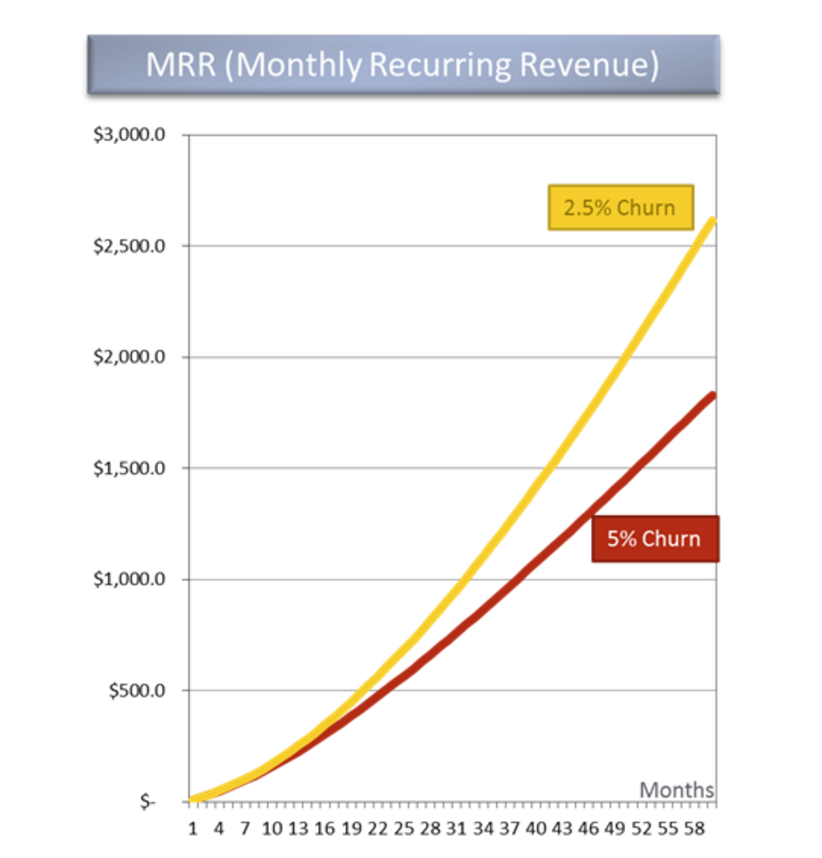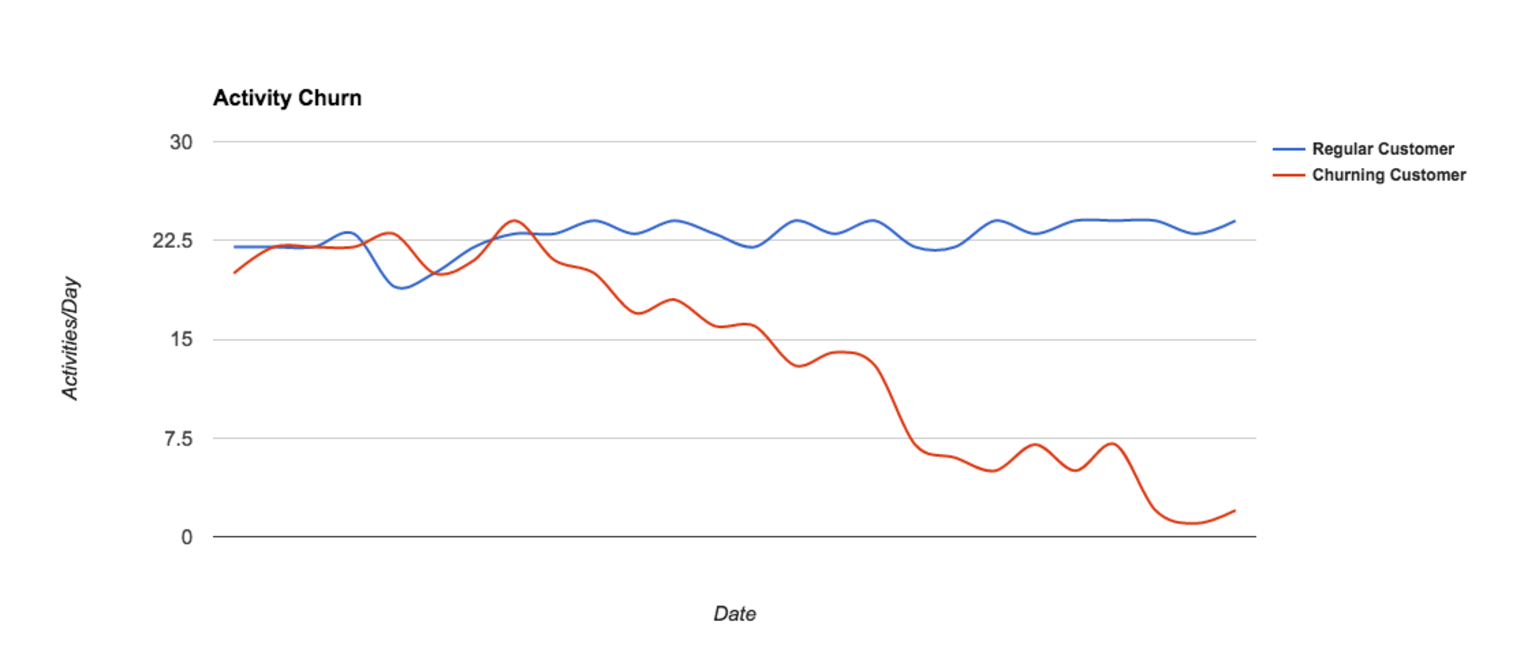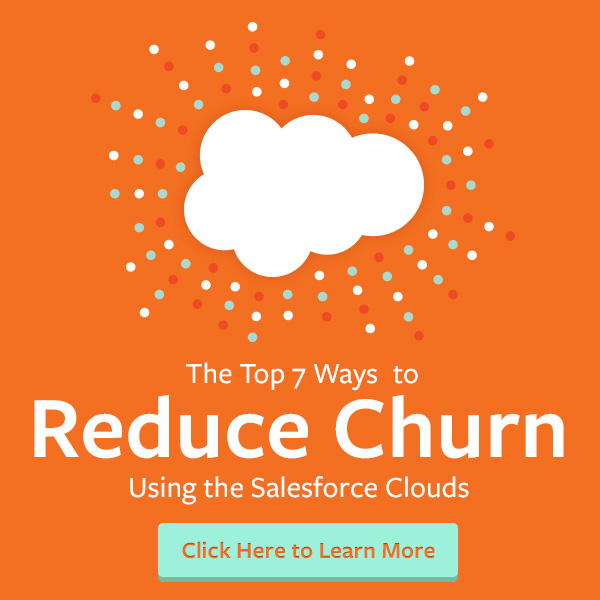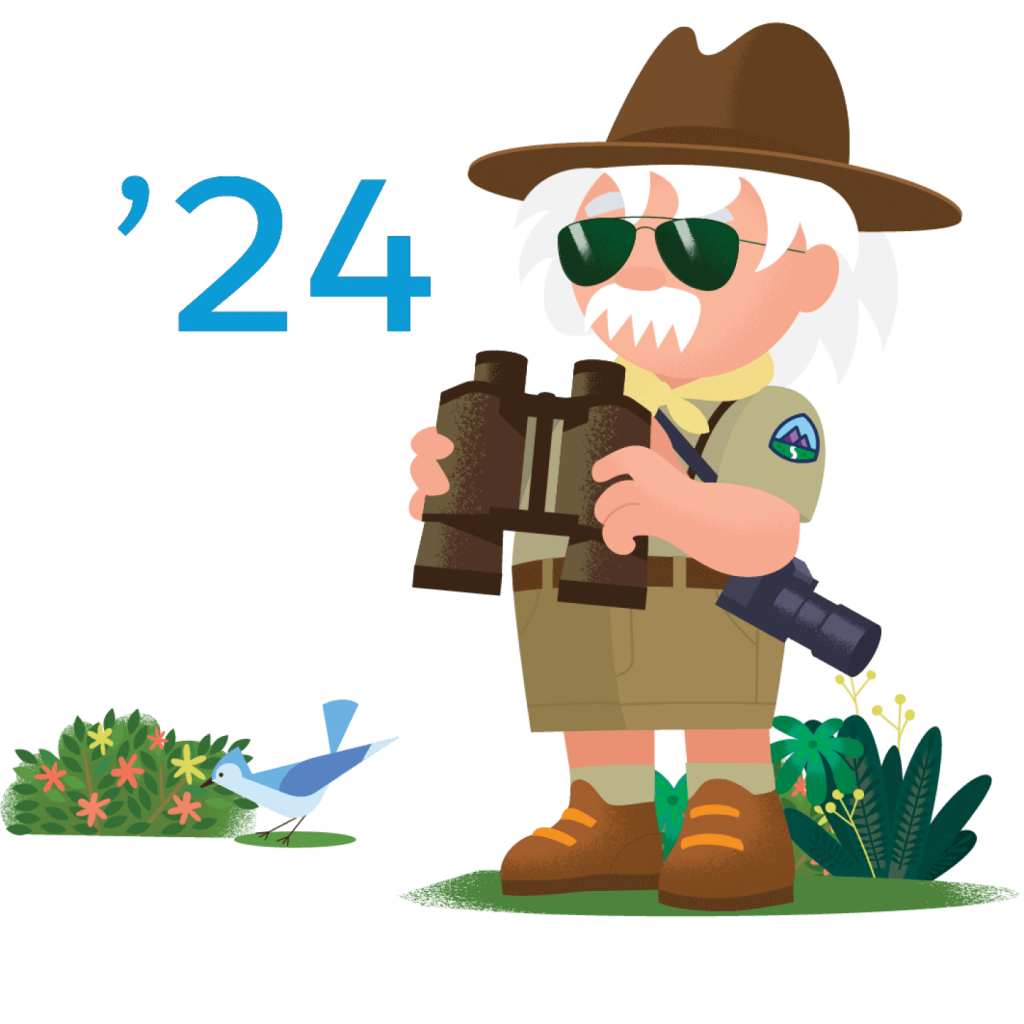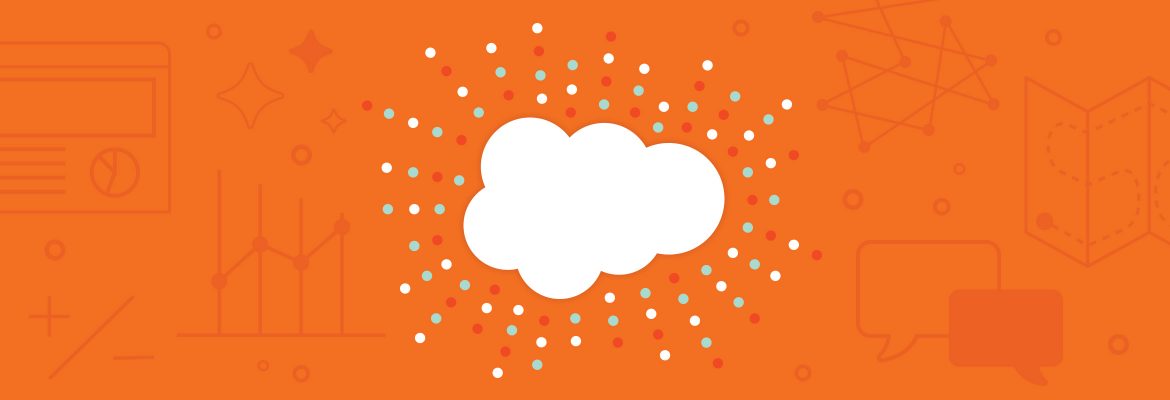
A key metric in determining the valuation of a SaaS company is lifetime value. The #1 enemy of lifetime value is churn. According to startup guru David Skok, as a SaaS company grows, the size of the subscribers/customers/users who no longer do business with the company will also, organically, grow.
What does this mean? A loss of revenue, which requires more and more signups from new customers just to replace what you are organically losing every month. In other words, growth slows, becomes stagnate or worse, churn is so bad, you’re losing more customers than you’re gaining every month. That’s why you need to be simultaneously feeding your growth engine, while monitoring churn and your other startup metrics. Even a small reduction in churn can have a significant impact on Monthly Recurring Revenue (MRR).
The simplest way to calculate SaaS churn is to divide the number of customers canceling their order/subscription in a timeframe by the total number of customers at the beginning of that time frame. So if Company A had 500 customers at the beginning of June, and only 400 customers at the end of June, the churn rate would be:
500-400/500*100 = 100/500*100 = 20%
It’s mission critical for a SaaS company to get a handle on its churn rate – so critical that we put together a special C|S Churn Report that goes into detail on 7 ways to reduce your churn by using the Salesforce Clouds. Here are 3 ways to reduce churn, excerpted from the C|S Churn Report.
FREE DOWNLOAD: Access the full C|S Churn Report: 7 Ways to Reduce Churn by Leveraging the Salesforce Clouds
1. Identify and Address Activity Churn Signals Before Loss
Just like personal relationships, your customers don’t suddenly wake up and break up with you. Usually, trouble’s been brewing for a while. And just like those personal relationships, you have a chance to address issues and potentially work things out – if you catch it in time. But how do you know when a customer’s about to jump ship?
Take a look at your analytics on your customers’ activity and identify your red flags. Examples could be:
- A reduction in the time spent by a customer in their dashboard
- A reduction in the number of the client’s users accessing your product
- The time spent by a user on a single feature/task (is the client experiencing problems moving onto the next step?)
- Time spent on features suddenly falls away. Does this feature not support their use case anymore?
By segmenting the customers behind these red flags, you can work towards mitigating the churn.
How the Salesforce Clouds Help
Sales, Service, and Community Cloud can create a 360 degree view of customer activity. Customer interactions with your sales team about revenue opportunities show up beside their cases logged with your support group. The questions that they collaborate on with other customers also appear on the same record. As a result, you can track, measure, and report on their holistic relationship with your company from one application.
2. Re-Engage With Trigger Based Emails
Once you identify which actions add value to customers and make them come back for more, you can setup automated, trigger-based emails that encourage people to take those actions. Email triggers can take the following forms:
- Abandoned cart reminders
- Customer lifecycle management (birthday emails, activity encouragement emails, etc.)
- Shipping confirmation emails
The basic idea is to ensure that existing clients remain active and engaged, which is the way to win recurring business from them. Take a look at your own product, and ask yourself, what are the actions that add value to your users? Then, set up automated, trigger-based emails to encourage people to take those actions, all the way from completing your onboarding process to using your product on a regular basis. But take heed, intrepid product manager! Not all customers nor churn reasons are universal, use the following guidelines to decide how and when to send emails.
Guidelines for Sending Re-Engagement E-Mails
- Target the Right Customers
There is a difference between someone who didn’t convert after a 30 day trial and a year long user who has started to slip away. The difference results in two different jobs, conversion and recovery. Don’t let them both fall into a naive “we miss you” bucket.
- Be Personal
Don’t auto-mail a customer who has several open support issues to remind them to login. Such activities do more harm than good. Cross pollinate your email with support data to ensure this mistake is prevented, then have a real support person start a conversation to identify this customer’s needs and how they might be best served. Engagement is a two-way street!
- Be Interesting
Motivate your user to login. There are often features that will bring customers back, or prevent them from switching. By offering churning customers a glimpse of what’s coming down the line, you can excite them about future releases. Things that inspire people to stick around are usually features which save time (e.g. better importing), increase efficiency (e.g. integrating with 3rd parties), or offer additional value for no extra work (e.g. weekly reports). Leverage usage metrics to help you identify these features.
- Be Visual
If you have new features or even UI refreshes coming down the line, screenshots can be particularly interesting for long standing users. If the improvements are in terms of workflow, sometimes a clear diagram will be seen and understood far better than paragraphs of text.
- Be Kind and Respectful
Some amount of churn happens naturally, understand that your product will not solve everyone’s needs. Do what you can to retain or convert the customer but over-sending emails for months post loss will drive negative emotions and will end up doing more harm than good.
How the Salesforce Clouds Help
Once you’ve identified key customer actions and followed the guideline above, Salesforce Marketing Cloud provides significant horsepower for running the email campaigns. With Journey Builder, you can reach customers across all digital channels, devices, and business functions from one platform. Create simple, or complex, rulesets that route highly targeted emails to your customers. Automate engagement and build 1-to-1 journeys at scale – all while adapting interactions based on customer behavior. Leverage predictive intelligence to deliver relevant content.
3. Increase Collaboration with Your Customers
Help your customers surface ideas and problems by providing communication pipelines to your support team, your product team and your other customers! Open the lines of communication via a customer community implementation associated to your business org. Utilizing standard community templates for case management and chatter or extensive implementations leveraging more advanced features such as Knowledge Base and Community Discussions will enhance the experience a customer feels when looking for support or information.
Sumo Logic is a firework in the startup world, but faced real challenges figuring out the best way to set its customers up for success. By implementing a Salesforce Community, Sumo Logic was able to:
- Democratize internal knowledge to make it available for all users
- Help customers use Sumo’s platform better by creating a one-stop shop for questions, exploration of new products, potential ideas, and collaboration
- Improve user onboarding to instantly empower them to thrive, not just survive
How the Salesforce Clouds Help
Salesforce Community Cloud provides modules for managing questions, discussions, ideas, knowledge articles, cases, and countless other type of information. It also supports chat, phone, self-service, and even bleeding edge communication channels still in development. At the same time, Salesforce Marketing Cloud enables companies to collaborate with customer through social media. It helps them track, engage, and shape conversations as they happen in real time.
Want to know more?
SaaS companies that enjoy a low churn rate do more than just put out a great product. They communicate and create a process that keeps their customers coming back for more. Don’t sweep this mission critical piece under the rug. Leverage the strategies and the Salesforce solutions listed above to your advantage.
CodeScience is the only Salesforce partner that is completely focused on SaaS companies. We bring solutions to market in a way that transforms our clients’ businesses and their bottom lines. Helping with sales, distribution, customer success, marketing and implementation, we deliver a holistic approach that supports SaaS businesses throughout the ISV lifecycle. Put your SaaS in our hands.
Get the complete C|S Churn Report here packed with 7 ways (plus a bonus 8th tip!) to reduce your churn using the Salesforce Clouds, and then talk to our team.
